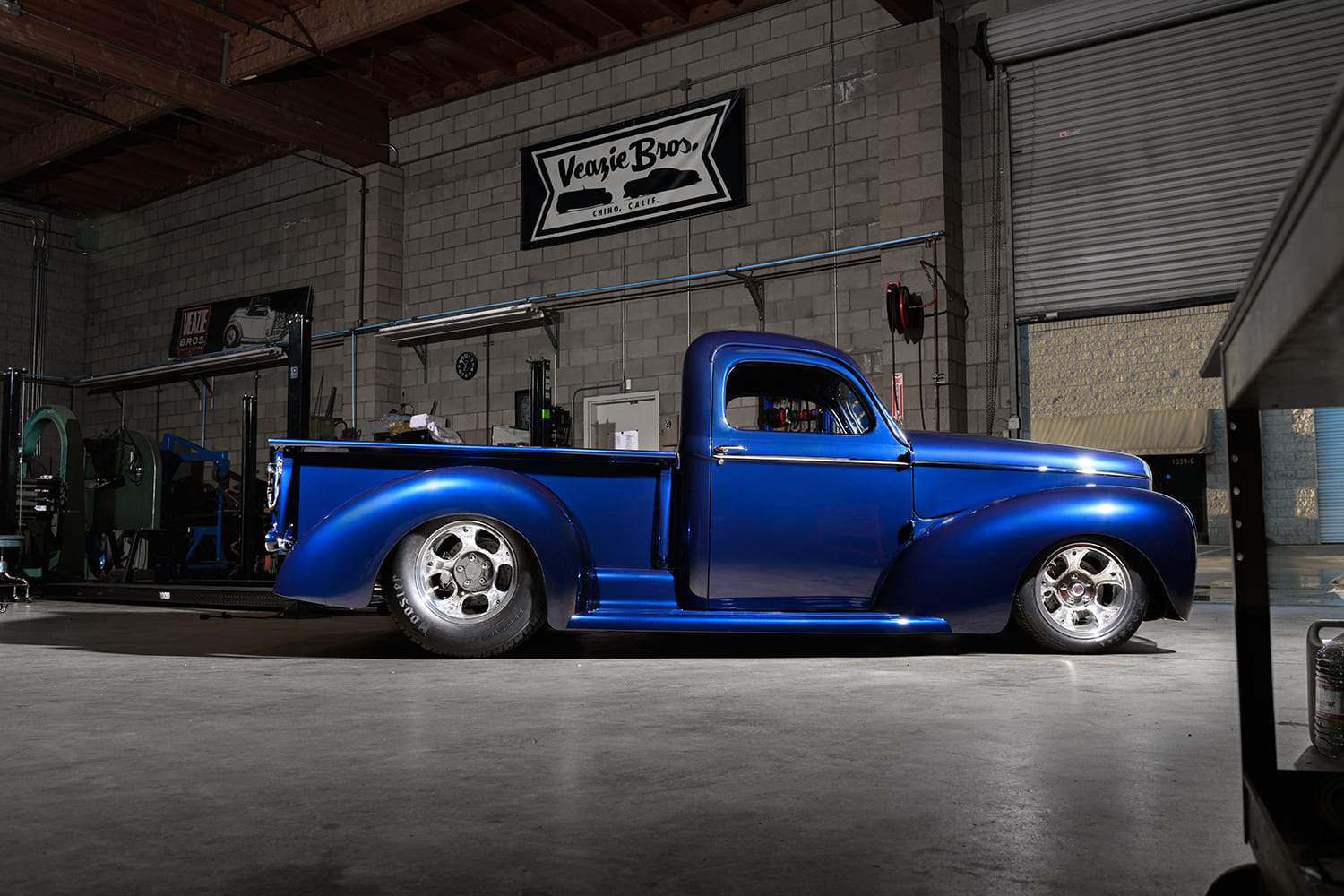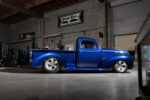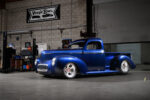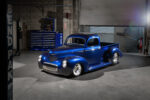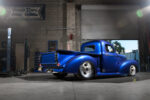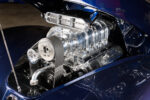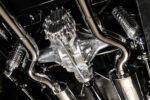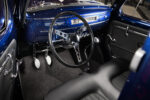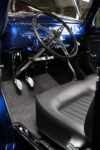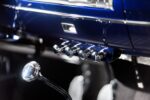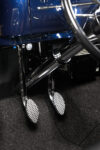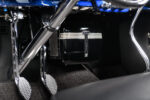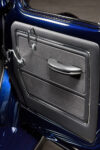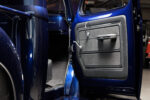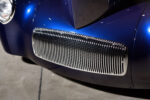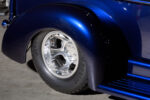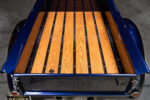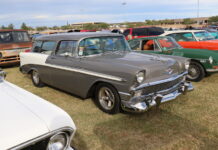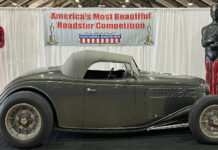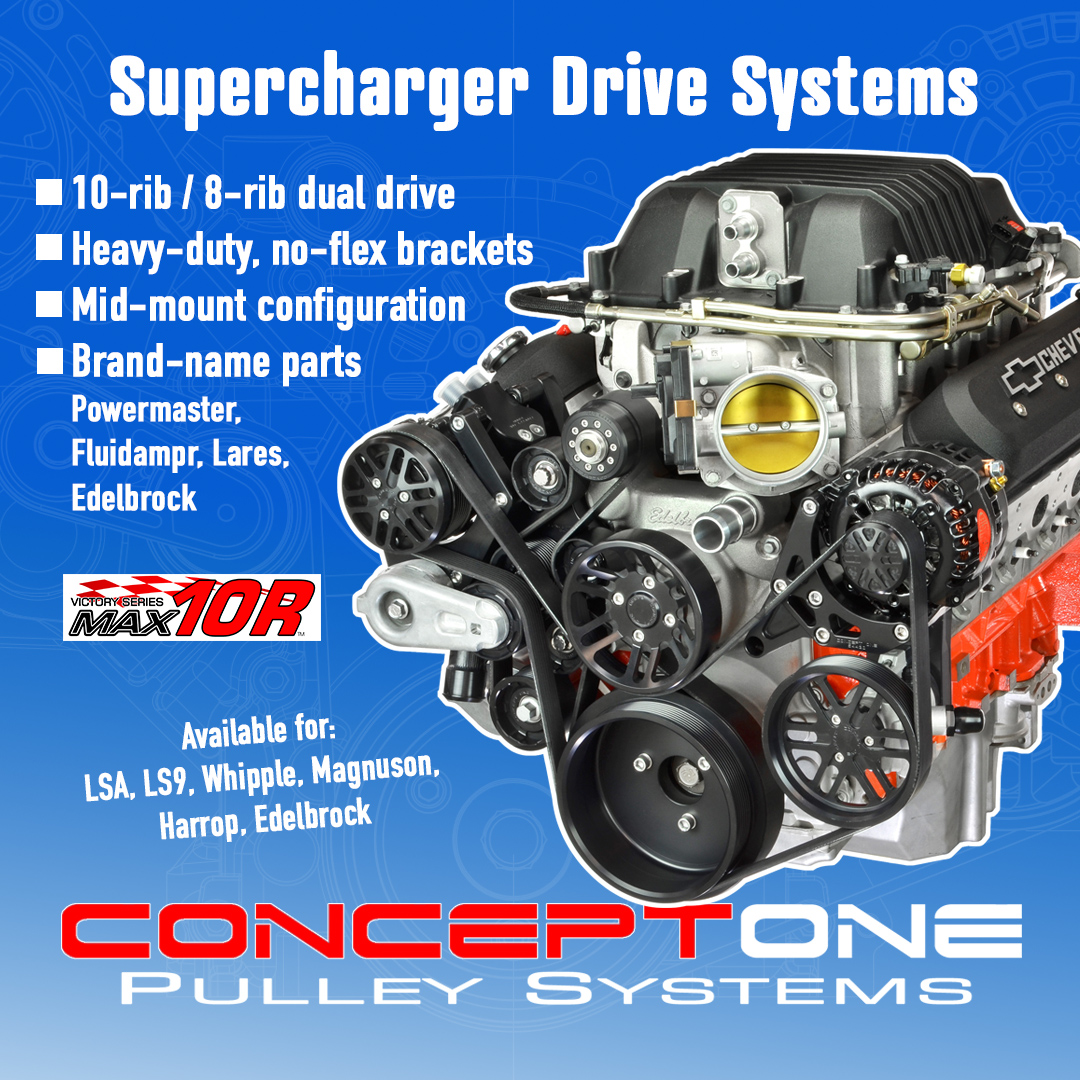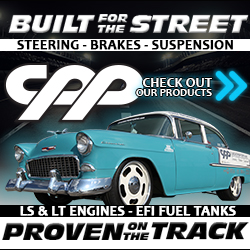By Brian Brennan – Photography By Luke Munnell
This company is best known for its history of designing and manufacturing World War II–era Jeeps. They weren’t the only maker of WWII Jeeps, but they are certainly well known for this. The 1941 and 1942 models were called “Americar” because of the patriotic spirit of the time. The 1941 Americar models, including the pickup, were designated as Model 441.
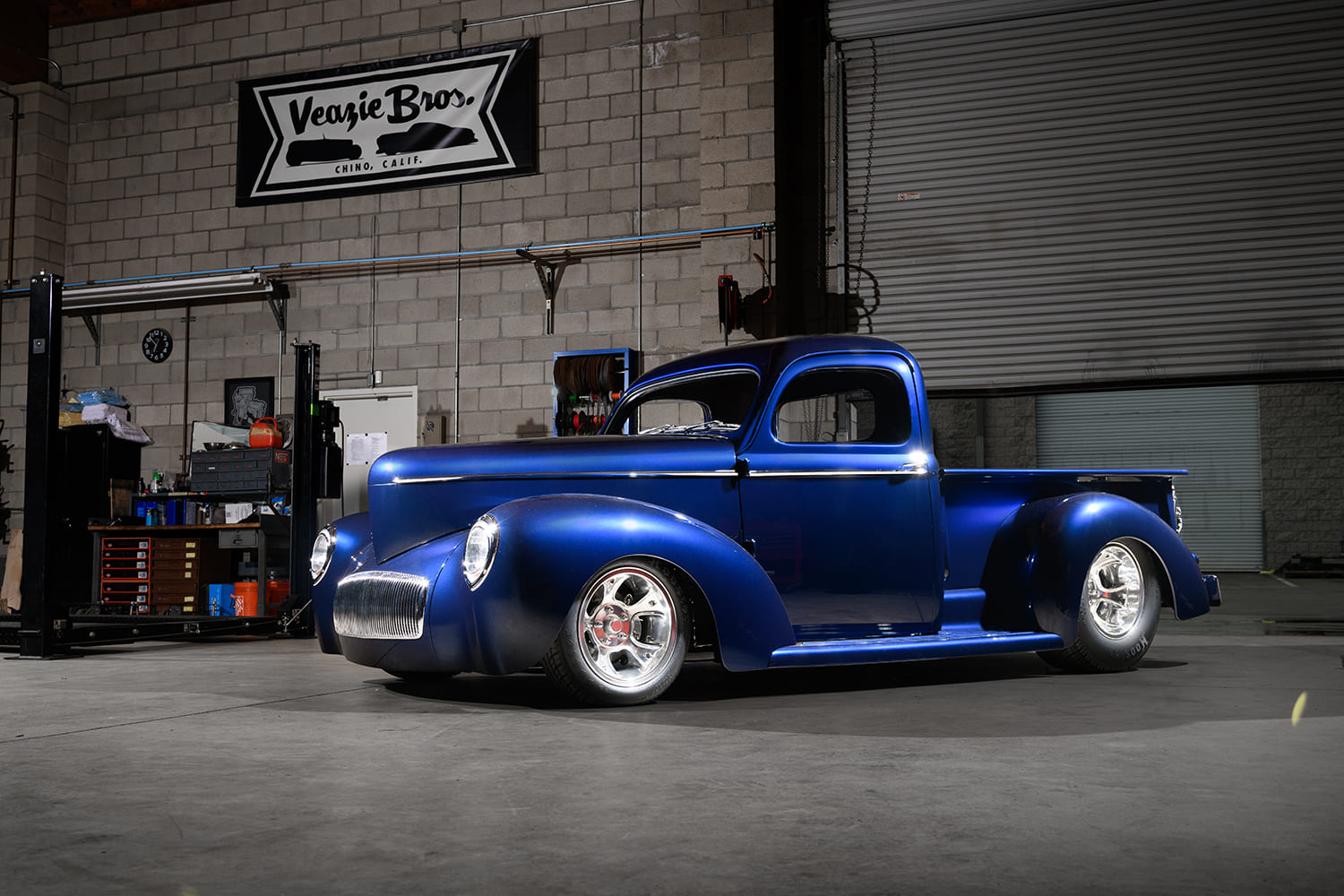
Larry Jacinto from Mentone Beach, California, proudly owns this beautifully built 1941 Willys pickup, which he fondly remembers riding in as a kid. He bought the truck from a friend who has since died and began building one of his most cherished childhood memories. The project was taken to Veazie Bros. Fabrication, where Justin and Evin Veazie work.

All hot rods need a signature powerplant, and this 1941 Willy pickup is no exception. An impressive LSA delivers the seat-of-the-pants, retina-detaching acceleration that a hot rod should always have. The LSA V-8 was then sent to Jeff Ginter Racing Engines. This powerhouse has been pushed to a “motorvating” 800 hp, making it ideal for any hot rod. The engine modifications for the 1941 Willys pickup exemplify high-performance engineering, featuring a robust LSA V-8 equipped with a Littlefield 6-71 supercharger and a Joe Blow racing injector hat. The setup includes Callies Magnum 4.000-inch stroke rods and Ultra Billet 6.125-inch H-beam rods, paired with RaceTec forged pistons, which deliver a 9.0:1 static compression ratio and now features a displacement of 416 ci. The factory cylinder heads were CNC ported by West Coast Cylinder Heads for improved airflow, while a Comp Cams hydraulic roller camshaft with a lift of 0.625 provides optimal performance. Precision is maintained with Clevite-coated engine bearings, a Melling high-volume oil pump, and a Holley wet-sump oil pan. The engine breathes through a Bug Catcher top with injectors and is tuned via a Holley Dominator ECU connected to a custom wiring harness by Jax Motorsports. To ensure durability, ARP head and main studs are used, along with stainless steel 12-point hardware throughout. High-performance Manley dual valvesprings support the setup. The Willys pickup, with its meticulously selected components, including a Meziere flexplate and MSD starter, stands out as a true hot rod, generating approximately 800 hp and turning heads wherever it goes.
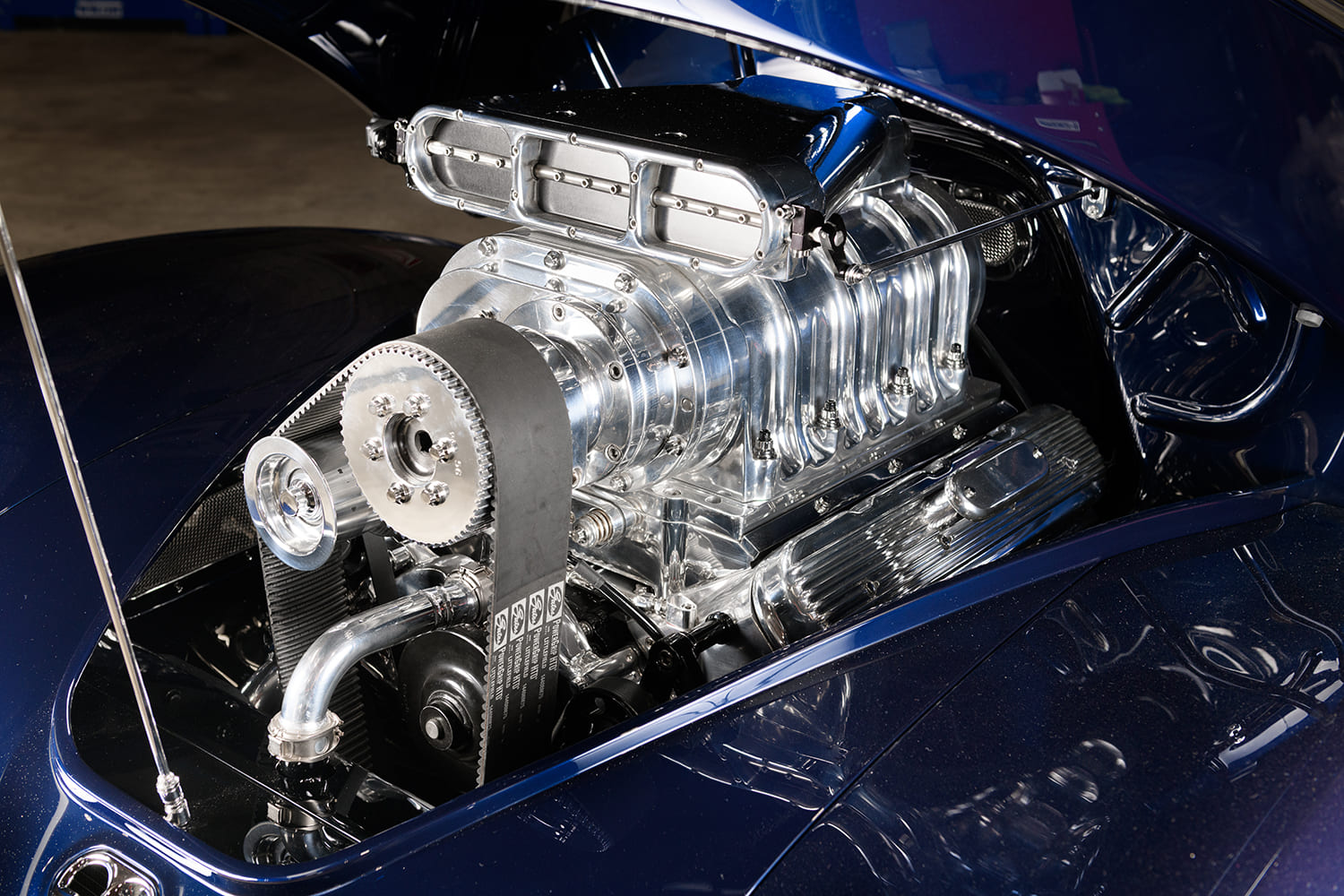
The exhaust system features custom stainless steel headers that lead into 3-inch piping, finished with Borla mufflers, designed for both performance and aesthetics by Jeff Olsen. Power is harnessed through a 4L80E transmission with a full lock-up 3,500-rpm stall converter and internals from Maximum Transmission. Handling power transfer is a Ken Sapper–built Halibrand Champ quick-change rearend featuring limited-slip gearing and a 3.75 final drive. Cooling is managed by SPAL brushless fans and a custom radiator, ensuring that this powerhouse stays capable whether cruising or racing.

The frame modifications of the 1941 Willys pickup represent top-tier craftsmanship, beginning with a custom-built frame initiated by Al Simon and further refined by Jeff Olsen before being completed by Robin Silk at Veazie Bros. This impressive frame utilizes 2×4 framerail sections with both the front and rear kicked up, complemented by custom tube crossmembers that add structural integrity. Enhancing the truck’s capabilities is a custom stainless steel fuel tank crafted by Olsen. The suspension system features a stainless steel Mustang II front setup paired with a stainless four-link rear setup that incorporates a center “Y” slider to keep the rear centered during dynamic maneuvers, such as stomping on the loud pedal. Polished Strange coilovers are fitted at both the front and rear for optimal ride quality. Handling is further improved with the installation of splined Speedway Engineering sway bars at the front and rear. Steering is managed by an Ididit manual rack that has been meticulously disassembled, nickel plated, and polished, alongside a chrome non-tilt steering column. For braking, the Wilwood system features polished Dynalite calipers and drilled-and-slotted two-piece rotors, providing excellent stopping power. Completing the setup is a custom pedal box featuring a Moal Custom Coachworks balance bar and Tilton master cylinders, with remote reservoirs cleverly integrated into the cowl duct. This pedal box also features an adjustable ratio bell crank, providing a perfectly matched throttle pedal and machined arm, which ensures a responsive and enhanced driving experience.
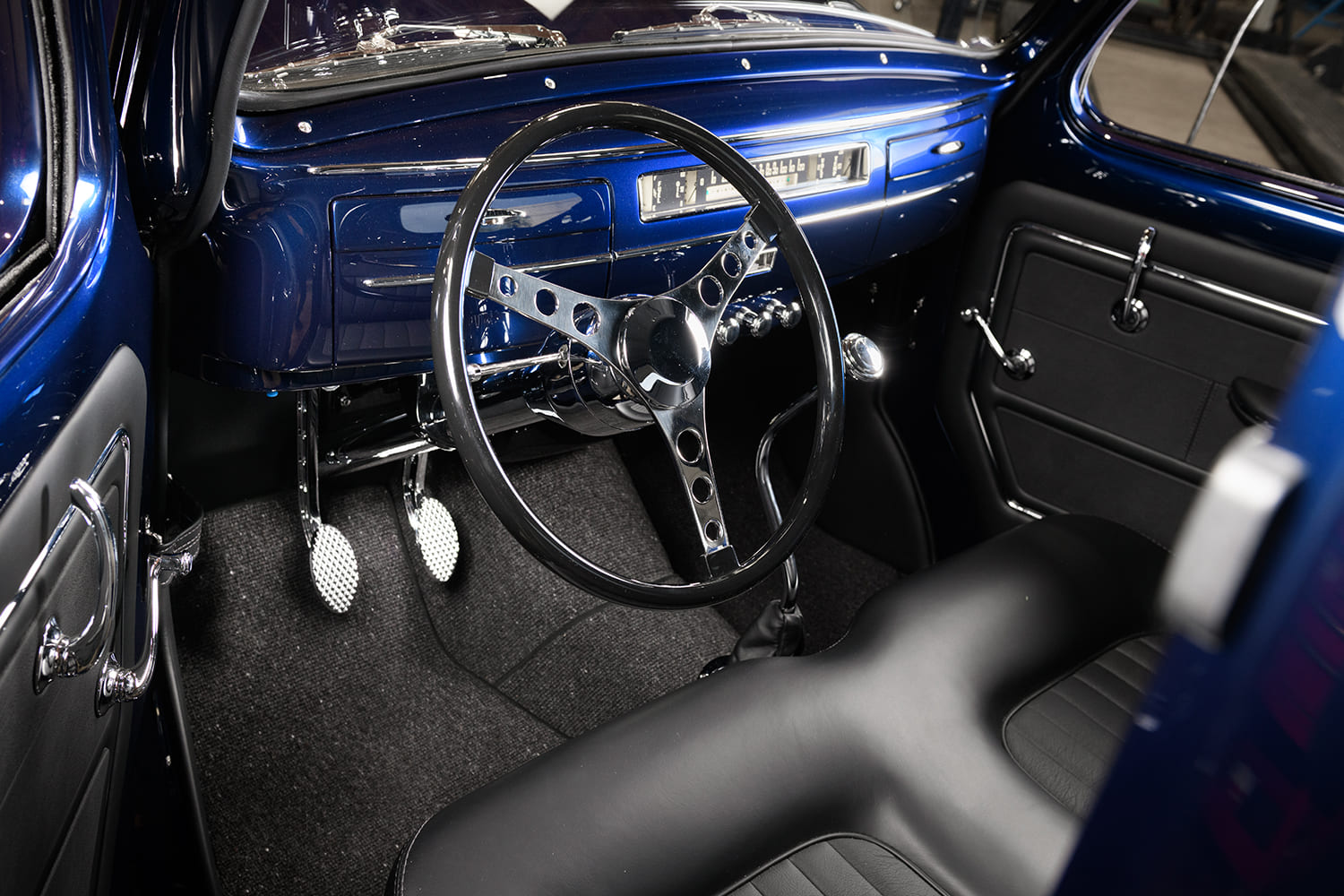
The wheels have an interesting history. The fronts are now 15×8, but they originally started as 15×10 ET3 two-piece rear wheels that Bob Bauder and Eric Vaughn collaborated on converting into a one-piece with a new lip. Vaughn worked his magic on the rears as well, taking original ET3 two-piece wheels and transforming them into 16×10 one-piece wheels with a new lip. These newly modified wheels are paired with Hoosier Pro Street tires, measuring 24×7.50R15LT in front and 31×12.50R16LT in the back.
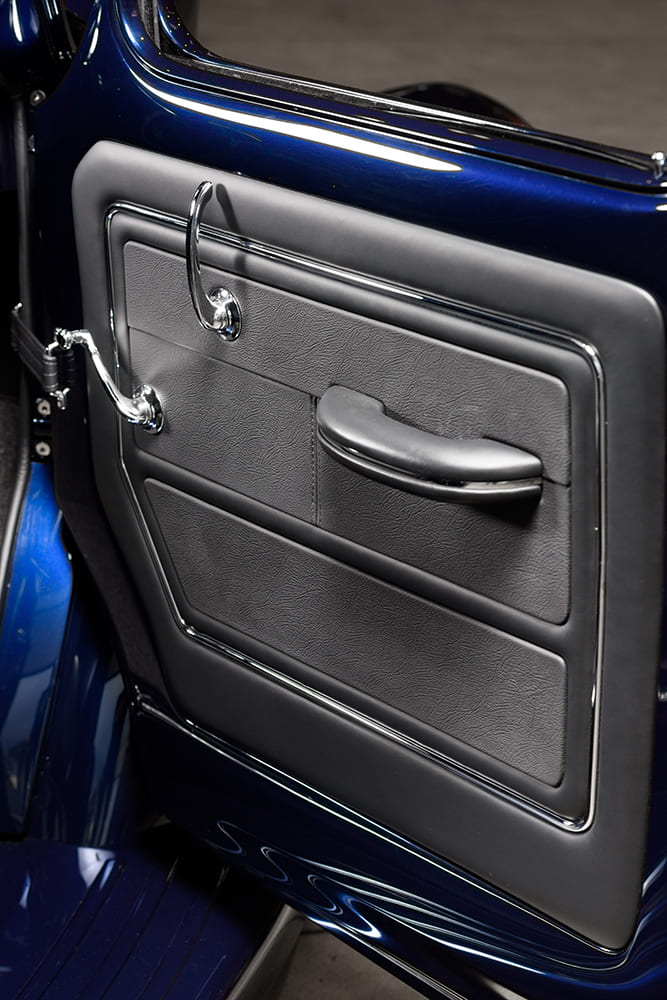
The 1941 Willys pickup has undergone a remarkable transformation, featuring various body modifications that improve its classic hot rod look. The hood has been extended and designed with a peaked nose, along with custom braces and supports for the original hinges. The rear corners of the cowl were reshaped to boost its visual appeal, while the cowl sides were narrowed to create pockets, ensuring the hood sits flush with the doors. A notable modification includes the reshaped nose panel, which now accommodates a Porsche latch that extends back to the firewall. The cowl edge return has been deleted, retaining a stock detail on the reworked firewall. Additionally, the windshield opening has been redesigned for symmetry. The vehicle features a custom rear garnish molding, and the door hinges have been made removable with handy locating pockets. To enhance the overall design, the bottoms of the doors and cab were lengthened to close the gap with the running boards. Speaking of which, the custom handmade running boards, reminiscent of those found on a 1940 Ford pickup, began with a 1946 Chevy bed modification. The rear fenders from the 1946 Chevy were widened, and their wheel arches were reshaped to match the front. A custom waterfall panel connects the bed to the running board, drawing inspiration from the classic 1950s Ford F-100. Other modifications include a custom roll pan beneath the tailgate, custom bed chain hardware—all hand built from stainless steel—and a uniquely designed handmade tailgate featuring an embossed Willys skin. The crew handled this meticulous work at Veazie Bros., including Evin Veazie, Jeff Johnson, Kev Elliott, Eddie Legliu, Chris Camacho, and Greg Hirota. From here, hand-formed brass moldings were crafted by Little Louie and Justin Veazie, while Billy Phelps and Steve Jones handled the plating. Mick’s Paint by Mick Jenkins is a PPG-based Ferrari dark blue metallic. (There are five dark blue metallic colors made for Ferrari.)
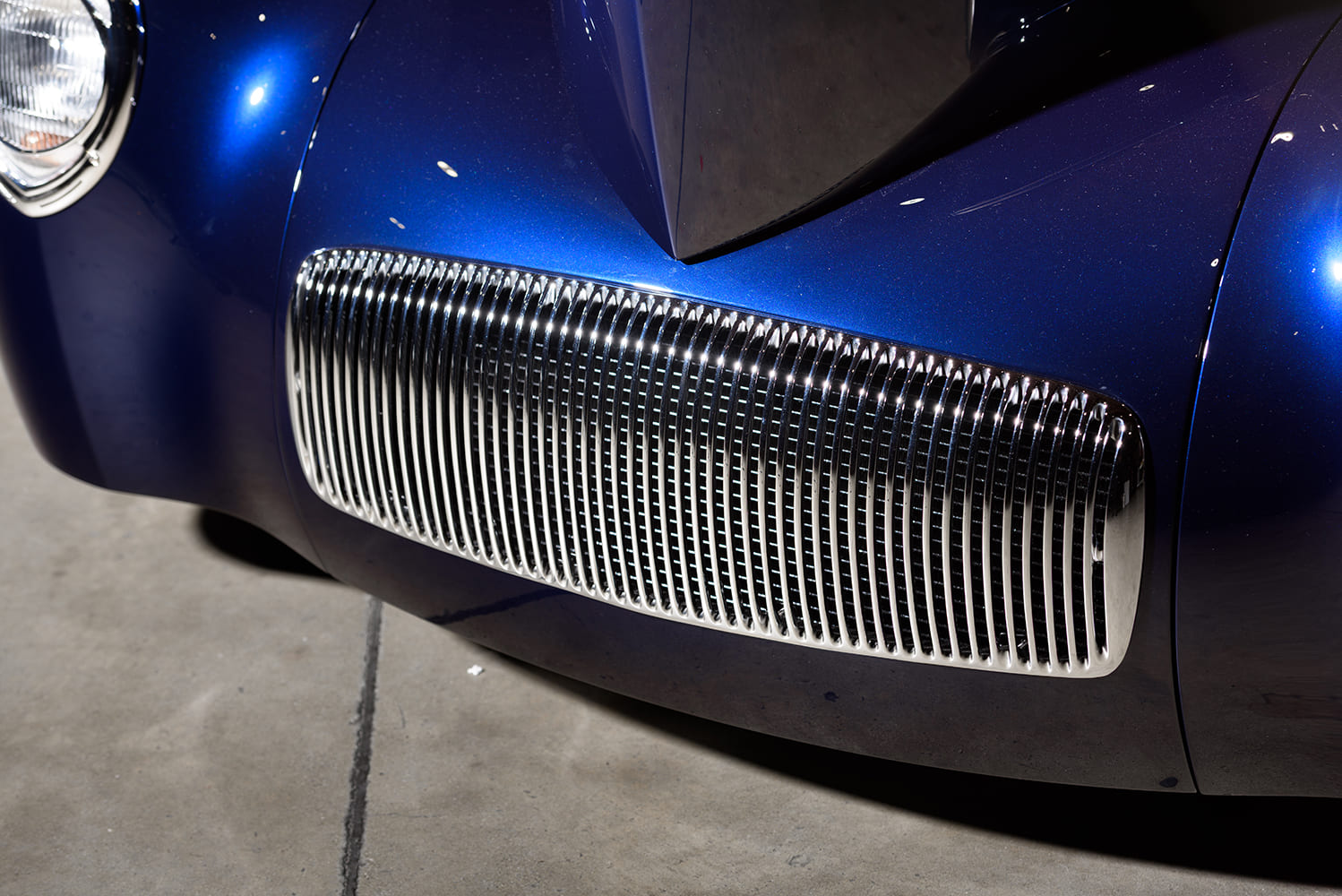
The interior of the modified 1941 Willys pickup is a blend of classic style and modern conveniences. The stock pickup dash has been reimagined, featuring handcrafted trim that echoes the lines of a coupe dash with a custom switch waterfall. Classic Instruments gauges, based on the original Willys, feature custom EVOD bezels that add a vintage appearance while ensuring functionality. Underhood, the truck is equipped with a full motorsports-grade wiring harness by Jack Nickerson at JAX Motorsports, complete with Cannon plugs (also known as an XLR connector or circular connector). Specialized tools are often required to release the locking tabs that hold the pins in place. Comfort is prioritized with a Southern Auto Air mini unit, while the steering wheel, a prototype Corvette-style design by Veazie Bros., has transitioned into a production part. The interior showcases the craftsmanship of Ron Mangus Interiors, featuring luxurious two-toned black leather from Moore & Giles and a stylish salt-and-pepper black German square weave. An Alcantara-molded headliner provides a refined finish, complemented by a modified Glide bench seat and a hidden Rockford Fosgate stereo system installed by Art of Sound. Adding to the custom touches are a Lokar shifter and unique knobs, handles, and sill plates created by Matt at Milling and Turning Tech. This interior transformation not only enhances the vehicle’s aesthetic but also elevates the driving experience to a new level of sophistication.

Since its debut at the 2025 Grand National Roadster Show, it took home First Place in the Full Custom Rod Truck and the Sweepstakes Rod Category, which included a $1,000 check and a very nice trophy.

It has also been named a 2025 Goodguys Early Truck of the Year finalist. Look for an interesting story soon on how the Willys logo was replicated on the tailgate—something plenty of hot rodders might try. MR
Check out this story in our digital edition here.











